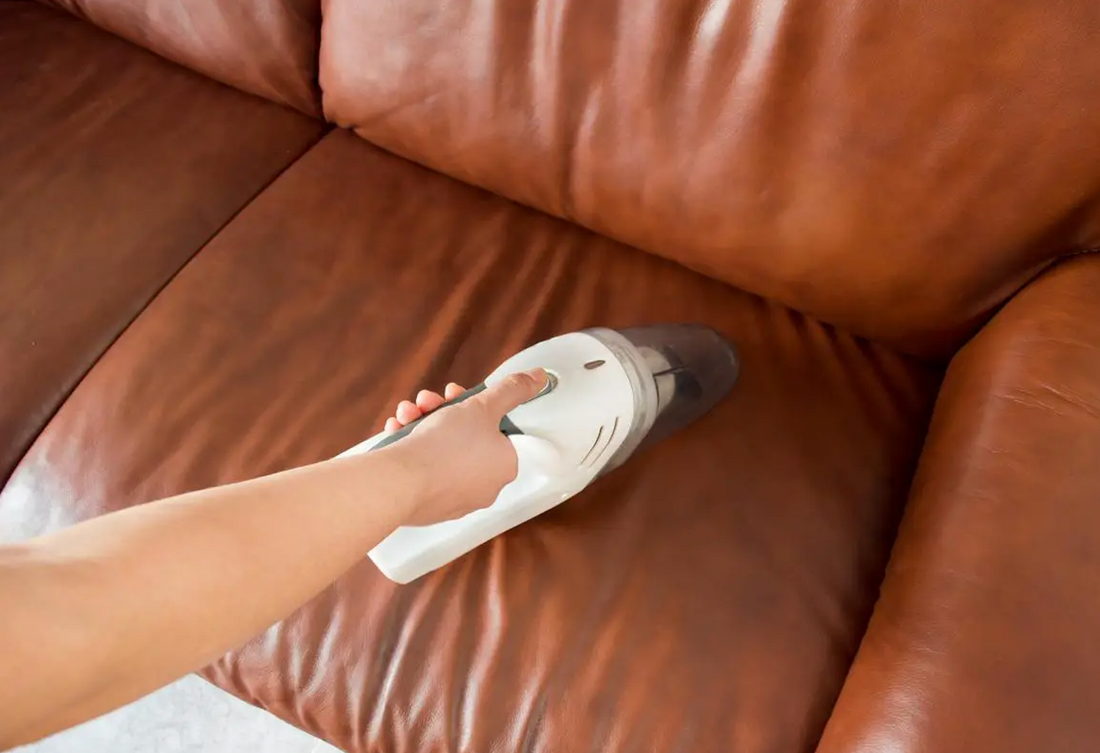Preserving the timeless allure of Italian leather by discovering the best ways to clean and care for these exquisite pieces. Uncover the secrets to maintaining the luster and longevity of your Italian leather goods with proven techniques and tips.
Understanding the unique characteristics of Italian leather is essential to ensure it ages gracefully, making the best way to clean Italian leather and the overall care process crucial for preserving its natural beauty and durability. Explore the art of caring for Italian leather to enhance its richness and maintain its luxurious appeal over time.
The Attributes Of Italian Leather That Influence Its Care Requirements
Softness And Suppleness
The intrinsic attributes of Italian leather not only contribute to its unparalleled aesthetic appeal but also significantly influence the care regimen it demands. Firstly, the softness and suppleness that characterize Italian leather necessitate a tailored approach to maintain these qualities over time. The delicate touch and luxurious feel of Italian leather require meticulous care routines, emphasizing gentle cleaning and conditioning to preserve its inherent softness.
The natural grain and texture of Italian leather add another layer of complexity to its care requirements. Unlike processed or corrected leather, the natural grain patterns demand a more nuanced approach. Italian leather care involves avoiding harsh cleaning agents that may disrupt the surface, opting instead for products designed to enhance and protect the authentic texture, ensuring a lasting visual and tactile allure.

Italian leather's natural breathability is a distinctive feature that impacts both comfort and care. The ability of the leather to breathe enhances its durability, but it also means that proper ventilation is crucial during storage. Italian leather care encompasses ensuring that the leather is stored in a cool, dry environment to prevent mold or mildew, preserving its breathability and longevity.
Sensitivity to sunlight is a characteristic that underscores the need for thoughtful Italian leather care. Prolonged exposure to direct sunlight can lead to fading and deterioration. Shielding Italian leather items from excessive sunlight, through careful placement or the use of protective coverings, is an essential part of the care routine to maintain their vibrancy and visual allure.

The absorption properties of Italian leather require consideration when addressing spills or stains. Prompt attention to any liquid exposure is crucial, as Italian leather can absorb liquids quickly. The care regimen involves swift blotting with a clean, dry cloth and, if necessary, using specialized leather cleaners designed to address specific stains without compromising the leather's integrity.
Finally, the quality of dyes and finishes employed in Italian leather production plays a pivotal role in its care requirements. Premium Italian leather often features high-quality dyes and finishes that enhance its color vibrancy and resistance to wear. Italian leather care emphasizes using products specifically formulated for high-quality leather to protect these finishes, ensuring that the colors remain vivid and the leather maintains its luster over time.
Best Way To Clean Italian Leather
Step 1: Understand Materials Before Cleaning
Step 1: Understand Materials Before Cleaning
Begin the cleaning process by understanding the specific type of Italian leather used in your furniture. Different finishes and textures may require distinct cleaning methods. Be aware of any manufacturer guidelines or recommendations to tailor your approach accordingly.
Step 2: Dust Removal
Prior to deep cleaning, gently remove dust and loose particles from the leather surface. Use a soft brush or a vacuum cleaner with a brush attachment to prevent abrasions. This initial step ensures that the cleaning process won't inadvertently scratch or damage the leather.

Step 3: Spot Test
Before applying any cleaning solution, conduct a spot test in an inconspicuous area to ensure compatibility. This helps you identify any adverse reactions and ensures that the cleaner won't cause discoloration or damage to the Italian leather.
Step 4: Prepare The Cleaning Solution
Create a mild cleaning solution by mixing a small amount of gentle soap or a specialized leather cleaner with water. Avoid using harsh chemicals or excessive moisture, as these can harm the leather's natural properties.
Step 5: Apply The Cleaner
Dip a soft, lint-free cloth into the cleaning solution and gently rub it onto the Italian leather in circular motions. Focus on stained or soiled areas, applying light pressure. Take care not to saturate the leather, as excessive moisture can lead to damage.
Step 6: Remove Excess Moisture
After cleaning, use a clean, dry cloth to remove any excess moisture from the leather surface. Promptly drying the leather helps prevent water spots or potential damage. Ensure that the leather is evenly dried to maintain its natural appearance.
Step 7: Dry Naturally
Allow the Italian leather to air-dry naturally. Avoid using heat sources such as hairdryers or heaters, as they can lead to uneven drying and potential damage. Patience during the drying process is crucial to achieving the best results.
Step 8: Condition The Leather
Once the leather is completely dry, apply a high-quality leather conditioner. Conditioning helps replenish natural oils, keeping the leather supple and preventing it from drying out or cracking. Choose a conditioner appropriate for the specific type of Italian leather you are treating.
Step 9: Buff And Polish
Conclude the cleaning process by gently buffing and polishing the leather with a clean, soft cloth. This step not only enhances the leather's shine but also contributes to a smooth, refined finish. Take care not to use excessive force to avoid causing abrasions.
How To Care For Italian Leather
Do's
Do's
Regular Cleaning
Regular cleaning is fundamental to maintaining Italian leather quality. Gently remove dust and debris with a soft brush or a slightly damp, lint-free cloth. This prevents particles from settling into the leather's pores, preserving its natural texture and appearance.
High-Quality Leather Conditioning
Investing in high-quality leather conditioner is paramount for Italian leather care. These conditioners replenish essential oils, preventing the leather from drying out or developing cracks. Choose a conditioner specifically formulated for the type of Italian leather you're treating, whether it's full-grain, Nappa, or another variety.

Leather Storage
Proper storage is crucial to prevent unnecessary wear and tear. Store Italian leather items in a cool, dry place away from direct sunlight. Avoid humid environments, as excess moisture can lead to mold or mildew, compromising the leather's integrity.
Rotate Use
Rotating the use of Italian leather items helps distribute wear evenly. Whether it's a favorite leather jacket or a cherished sofa, spreading usage across different pieces allows for consistent aging and patina development, contributing to a more uniform appearance.
Handle With Clean Hands
Handling Italian leather with clean hands is a simple yet crucial practice. Oils, dirt, or residues from hands can transfer onto the leather, impacting its appearance over time. Keeping hands clean when touching or using Italian leather items minimizes the risk of staining and deterioration.
Spot Testing
Before applying any cleaning or conditioning products, conduct a spot test in an inconspicuous area. This ensures that the products are compatible with the specific Italian leather type and won't cause discoloration or damage. Spot testing is a proactive measure to safeguard the overall quality of the leather.
Professional Cleaning
For deep cleaning or challenging stains, consider professional cleaning services. Professional cleaners have the expertise to handle Italian leather delicately, using appropriate products and techniques to address specific issues without compromising the leather's quality.
Proper Storage For Bags
Italian leather bags deserve specialized care. Stuffing bags with acid-free tissue or bubble wrap when not in use helps maintain their shape and prevents creases. Avoid overstuffing, as it can lead to permanent distortion. Store bags in dust bags to protect them from environmental elements and maintain their pristine appearance.
Don'ts - H3
Avoid Harsh Cleaners
One cardinal rule in Italian leather care is to avoid harsh cleaners. Abrasive chemicals or strong cleaning agents can strip away the natural oils and finishes that contribute to the luxurious texture and appearance of Italian leather. Opt for mild, specifically formulated leather cleaners to gently cleanse the leather without compromising its quality.
Avoid Direct Sunlight
Exposing Italian leather to direct sunlight is a practice to be avoided. Prolonged exposure can lead to fading, discoloration, and drying out of the leather. To preserve Italian leather quality, store items away from direct sunlight or use curtains and blinds to shield them from harsh UV rays.
Say No To Water
Water is an Italian leather item's nemesis. Excessive moisture can lead to water stains, loss of natural oils, and potential damage. Avoid using water for cleaning or excessive dampening of the leather. If spills occur, gently blot them with a dry, clean cloth to prevent water absorption.
Skip Conditioning
Neglecting to condition Italian leather is a grave oversight. Conditioning is vital to maintaining the leather's suppleness and preventing it from drying out or cracking. Skipping this step deprives the leather of essential oils, hastening its aging process and diminishing its overall quality.
Keep Away From Heat Sources
Italian leather and heat sources don't mix well. Placing leather items near radiators, heaters, or any direct heat sources can lead to drying, cracking, and irreversible damage. A cool, dry storage environment is ideal to preserve Italian leather quality over time.
Don't Ignore Stains
Ignoring stains is a significant faux pas in Italian leather care. Promptly addressing spills or stains is crucial to prevent them from setting into the leather. Use appropriate cleaning products and techniques to tackle stains without compromising the leather's integrity.
Don't Use Plastic Covers
While protecting Italian leather items is essential, using plastic covers is a don't. Plastic can trap moisture, leading to the development of mold or mildew. Opt for breathable, fabric covers or dust bags to shield leather items without risking environmental damage.
Conclusion
In conclusion, mastering the art of caring for Italian leather is a meticulous process that involves understanding the nuances of its care requirements. Whether it's the best way to clean Italian leather or maintaining a high-end Italian leather couch, the key lies in a comprehensive approach. Knowing how to clean Italian leather and how to care for Italian leather ensures the preservation of its timeless elegance. These practices not only protect the material but also contribute to the enduring legacy of craftsmanship and sophistication inherent in Italian leather, allowing enthusiasts to relish the beauty of their cherished items for years to come.





